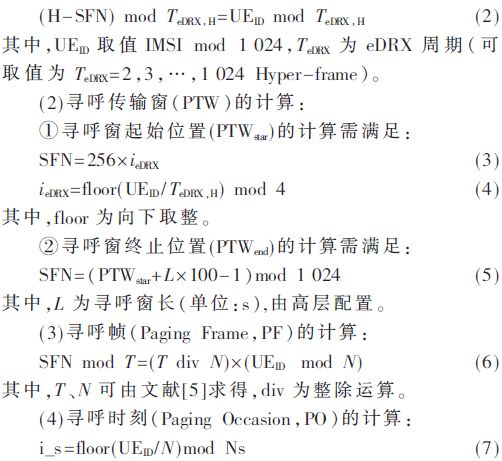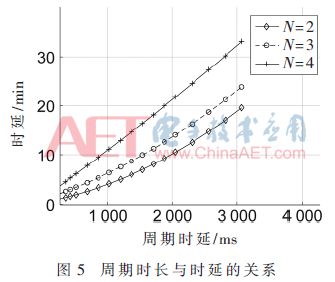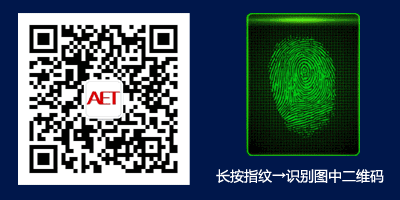Abstract: The adoption of the Discontinuous Reception (DRX) mechanism is an important means for mobile terminals to reduce power consumption. In the NB-IoT system, the low speed and low frequency of services require terminals to have extremely low power consumption. Therefore, it has made corresponding modifications to the discontinuous reception mechanism and introduced the Enhanced Discontinuous Reception (eDRX) to address its service characteristics. Through various timer operations, this paper analyzes the basic principles of the eDRX mechanism in detail and establishes an eDRX model. Experimental simulations show its performance in power saving and delay.
0 Introduction
In the mobile communication technology industry, research on terminal energy consumption optimization has never ceased, especially with the rapid development of Internet of Things (IoT) communication technology in recent years and the increasing awareness of energy saving and emissions reduction. The energy consumption requirements for end devices in mobile communications are becoming increasingly stringent. In the 3GPP (3rd Generation Partnership Project) LTE (Long Term Evolution) project, Discontinuous Reception (DRX) is an important method to improve energy efficiency at the wireless link layer. Its basic principle is to allow terminal devices to periodically enter sleep mode, during which the terminal does not listen to the Physical Downlink Control Channel (PDCCH) and turns off the transmission and reception units to reduce energy consumption of the terminal device[1].
In recent years, the Narrowband Internet of Things (NB-IoT), which has attracted widespread attention from all sectors of society, is a new wireless access technology in cellular systems that has even more stringent energy consumption requirements. A single battery is required to maintain normal operation of the terminal for up to 10 years. Therefore, to further reduce terminal energy consumption and meet the extremely low power consumption requirements of NB-IoT terminal devices, it is very necessary to adopt the Extended Discontinuous Reception (eDRX) technology[2].
1 Introduction to eDRX Functionality
eDRX has the same functionality as DRX, both achieving the goal of saving battery consumption by allowing the UE to periodically enter sleep mode at certain times. In the NB-IoT system, due to the characteristics of the service, more emphasis is placed on energy consumption, so eDRX has made corresponding improvements based on DRX, which will further reduce energy consumption[3].
As shown in Figure 1, an eDRX Cycle consists of two parts: “On Duration” and “Opportunity for eDRX”. When the UE is in the “On Duration”, it is in the wake-up activation period and listens to the NPDCCH subframe during this time; when the UE is in the “Opportunity for eDRX”, it is in sleep mode, which means that the terminal enters a sleep state without listening to the NPDCCH (Narrowband PDCCH) subframe to save power[4]. For the UE in eDRX mode, its sleep time is longer, and compared to the DRX in the LTE system, the UE’s power consumption is significantly reduced. In traditional DRX, the minimum interval is 2.56 s, but for IoT with infrequent data transmission, such a time interval is too frequent.

eDRX, like DRX, can operate in both RRC (Radio Resource Control) IDLE and RRC_CONNECTED modes. When the UE is in the eDRX mode under RRC_CONNECTED, the reception interval is extended to 10.24 s; in the RRC_IDLE state, it will extend the interval between paging messages and tracking area updates (Tracking Area Update, TAU) to as long as 40 min[5].
When the UE is in RRC_IDLE state, it does not receive service data and has no RRC connection, so the UE will only listen on the broadcast channel and call channel, but this listening is periodic, receiving messages from eNodeB through discontinuous reception at specific times to achieve battery consumption savings. When the UE needs to receive service data, it will switch from RRC_IDLE to RRC_CONNECTED state, and the discontinuous reception in the RRC_CONNECTED state is completed through the eDRX Cycle and a set of timers as shown in Figure 1.
The UE enters eDRX mode by checking the formula (1):

Where SFN is the system frame number, subframenumber is the subframe number, mod is the modulus operation, and longDRX-Cycle represents the longDRX cycle. If formula (1) is satisfied, the On Duration Timer is started, at which point the UE can start listening to the NPDCCH channel.
2 Timers in eDRX
On Duration Timer-r13: This timer represents the online duration of the UE after sleeping in an eDRX cycle, with values: pp1, pp2, pp3, pp4, pp8, pp16, pp32.
Drx-StartOffset-r13: Specifies at which pointer to start the On Duration Timer-r13, with values ranging from 0 to 255 (rounded).
HARQ RTT Timer: Indicates the minimum number of subframes the UE needs to wait before receiving downlink retransmission data. This timer is started when the PDCCH subframe indicates downlink transmission or is in the DL-SPS subframe. Meanwhile, Drx-RetransmissionTime-r13 will stop.
Drx-InactivityTimer-r13: Specifies that after the HARQ RTT Timer times out, it will start and continuously listen to the NPDCCH subframe during its operation, with values: pp0, pp1, pp2, pp3, pp4, pp8, pp16, pp32. Its basic timing unit is the number of NPDCCH subframes.
Drx-RetransmissionTimer-r13: Specifies that after the HARQ RTT Timer times out, the corresponding data in the HARQ Process will be retransmitted during its continuous time, with values: pp0, pp1, pp2, pp4, pp6, pp8, pp16, pp24, pp33.
In eDRX, the basic units of the On Duration Timer-r13, Drx-InactivityTimer-r13, and Drx-RetransmissionTimer-r13 have changed from subframes to pp (PDCCH period), because the length of pp is a dynamically variable unit, which will make the UE more adaptable to the business characteristics of narrowband IoT.
3 eDRX Mechanism
3.1 eDRX Mechanism in Idle Mode
The eDRX under the NB-IoT system inherits the DRX functional mechanism from LTE. Due to the infrequency of NB-IoT terminal services, the requirements for energy consumption efficiency, and support for enhanced coverage, the DRX cycle for the RRC_IDLE state has been extended, and a hyper-frame has also been introduced in the NB-IoT system. Its functional mechanism is: the UE first negotiates with the MME to obtain UE-specific eDRX, then calculates the paging hyper-frame (Paging Hyper-frame, PH) to obtain the hyper-frame number (Hyper-SFN) of the paging message, and finally calculates the paging transmission window (Paging Transmission Window, PTW) to determine the possible SFN area range where the UE’s paging message is located; finally, it obtains the subframe of the paging message through the paging frame (Paging Frame, PF) and paging occasion (Paging Occasion, PO)[6].
In NB-IoT, a 10-bit H-SFN carried by system messages is used to extend the DRX cycle (TDRX), and H-SFN consists of 1,024 SFNs. The terminal monitors the control channel used for paging during the PTW period on the specified H-SFN, and monitors paging according to the conventional DRX cycle (TDRX) during the PTW period, that is, listening to a PO in the PF by the NPDCCH scrambled with P-RNTI[7].
The calculation steps for the relevant parameters of the paging process are as follows:
(1) The paging superframe (PF) is calculated to satisfy the paging superframe number (H-SFN):

Where Ns represents the number of POs contained in each PF.
3.2 eDRX Mechanism in Connected State
In the LTE system, the Long DRX Cycle and Short DRX Cycle are configured to meet its service transmission characteristics; however, for the low-frequency and low-rate NB-IoT system, the Short DRX Cycle has been canceled, and the Long DRX Cycle has been renamed to DRX-Cycle-r13. To accommodate the longer data transmission intervals in NB-IoT, its maximum value range has been expanded from 2,560 subframes in R12 to 9,216 subframes, which will be more beneficial for terminal power saving.
The operating mechanism of eDRX in the RRC_CONNECTED state is shown in Figure 2.

As shown in Figure 2, before time t0, the UE has been in sleep mode, in which the terminal does not listen to the NPDCCH subframe; when the system frame number and subframe number satisfy formula (1), the UE enters the active state, starting the On Duration Timer-r13 at time t0, and listens to the NPDCCH subframe before this timer times out. At the active time t1, it receives a new NPDCCH subframe indicating downlink transmission data, at which point the HARQ RTT Timer is started. After this timer times out, the Drx-InactivityTimer-r13 is started, and during its operation, it listens to the NPDCCH subframe. After the Drx-InactivityTimer-r13 times out, at time t3, it checks whether the data in the soft buffer of the corresponding HARQ Process has been successfully decoded. If decoding is unsuccessful, the Drx RetransmissionTimer-r13 is started, and during this timer’s continuous operation, data is retransmitted; when the data is correctly decoded this time, at time t4, the UE detects a new NPDCCH subframe indicating uplink data transmission, at which point the HARQ RTT Timer is started again. After this timer times out at time t5, the Drx-InactivityTimer-r13 is started again, and during this timer’s continuous operation, it listens to the NPDCCH subframe. At time t6, the Drx-InactivityTimer-r13 times out, and then the Drx-ULRetransmissionTimer-r13 is started, and during this timer’s continuous operation, uplink data is retransmitted[8-9].
The algorithm flowchart of the eDRX mechanism in the RRC_CONNECTED state is shown in Figure 3.

4 Simulation Analysis of DRX under NB-IoT
In the RRC_CONNECTED state, the Enhanced Discontinuous Reception mainly has activation and power-saving modes. In the activation mode, the UE normally listens to and receives NPDCCH subframes; in the power-saving mode, the UE is in sleep mode and does not receive NPDCCH subframes. Within a single eDRX cycle, let the ratio of the durations of the power-saving mode to the activation mode be N. This test simulates the relationship between the cycle and power savings under different N values through experimental simulation, as shown in Figure 3; the relationship between cycle duration and delay is shown in Figure 4.

Figure 4 shows that under constant N, the longer the network-configured cycle, the more power consumption the UE saves; while when the cycle duration is constant, the larger N is, which means that within a single cycle, the duration in power-saving mode is greater than in activation mode, the more power consumption the UE saves. As the UE power saving increases, the real-time transmission of data may deteriorate, leading to increased delays, as shown in Figure 5. However, for the low-frequency and high-latency NB-IoT services, this change is positively impactful compared to the discontinuous reception in the LTE system.

5 Conclusion
Based on experimental simulation data, the eDRX function in NB-IoT can significantly reduce the power consumption of narrowband IoT UE, which is extremely important for enhancing the power utilization of end devices. Therefore, in-depth research on eDRX has a profound impact on improving the energy efficiency of mobile communication systems.
References
[1] RAJANDEKAR A, SIKDAR B. A survey of MAC layer issues and protocols for machine-to-machine communications[J]. IEEE Internet of Things Journal, 2015, 2(2): 175-186.
[2] Dai Bo, Yuan Ge Fei, Yu Yuan Fang. Narrowband Internet of Things (NB-IoT) Standards and Technologies[M]. Beijing: People’s Posts and Telecommunications Press, 2016.
[3] 3GPP TS 36.321 V13.3.0; Medium access control (MAC) protocol specification[S]. France: 3GPP Organization Partners, 2016.
[4] 3GPP TS 36.211 V13.3.0; Physical channels and modulation[S]. France: 3GPP Organization Partners, 2016.
[5] 3GPP TS 36.331 V13.3.0; Radio resource control (RRC); protocol specification[S]. France: 3GPP Organization Partners, 2016.
[6] TSENG C C, WANG H C, KUO F C, et al. Delay and power consumption in LTE/LTE-A DRX mechanism with mixed short and long cycles[J]. IEEE Transactions on Vehicular Technology, 2016, 65(3): 1721-1734.
[7] GHAVIMI F, CHEN H H. M2M communications in 3GPP LTE/LTE-A networks: architectures, service requirements, challenges, and applications[J]. IEEE Communications Surveys & Tutorials, 2017, 17(2): 525-549.
[8] 3GPP TS 36.523-1. Evolved universal terrestrial radio access (E-UTRA) and evolved packet protocol conformance specification[S]. France: 3GPP Organization Partners, 2016.
[9] 3GPP TS 36.300 V13.6.0. Evolved universal terrestrial radio access (E-UTRA) and evolved universal terrestrial radio access network (E-UTRAN); overall description; stage2[S]. France: 3GPP Organization Partners, 2016.
Author Information:
Li Guiyong, Shu Qiang, Li Wenbin
(Chongqing University of Posts and Telecommunications, Chongqing 400065)


